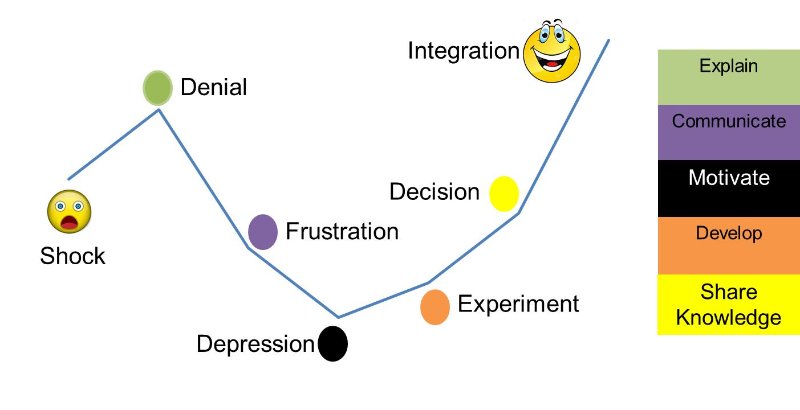This is the last part of our series articles which are based on our recent Demystifying PMS Implementation’s seminar.
In the first article we covered the definition of a PMS project, a high-level market overview and the traditional PMS project approach.
In the second article we suggested a different approach for resourcing PMS projects.
In this final article we will cover the considerations when building the project team and preparing the firm for change process.
Building the Project Team
The need to change the PMS system is typically driven through the IT or Finance teams. This results in the project immediately becoming a “technical” one rather than a strategic one.
One thing which I find surprising in PMS projects, especially given the level of investment and risks involved is the lack of involvement from the management board in the project.

Ideally before a project starts there should be a board level ownership and direction. We would recommend the board level sponsor is not involved in the day to day project. By their very nature a Director of Finance will focus on financial aspects, Director of IT on the IT.
The board level sponsor needs to ensure the strategic view is understood and adhered to.
Identifying Stakeholders
Once the Board Level Sponsor is in place we need to identify the wider stakeholder group. With a PMS project the stake holder group is very wide and will include the different fee earning groups as well as well as the all functional support areas.

There is a danger of trying to run the project via an unwieldy committee structure and that certainly needs to be avoided. It is therefore essential that as part of the planning process the stakeholders clearly understand what their involvement will be.
A RACI plan is a good tool to assist in this determining and clarifying the roles: –
- Who is Responsible
- Who is Accountable
- Who is to be Consulted
- Who is to be kept Informed
Project Team Performance
Given that we are forming a project team from disparate areas of the business it is not unusual for the project team to have not worked together before.
Add that into the competing elements of focus of PMS projects on Finance, IT, Reporting, BD and Fee Earner performance it is very normal for the project team to need to transition through the standard “Forming, Storming, Norming and Performing” cycle.

Typically, Law firms are not very good at assisting teams through this process. But by identifying the board level involvement and key stakeholders early in the project these key business decision makers can assist with ensuring that the team are provided with a common understanding of the project.
I have been involved in several PMS projects where either the Head of IT or Director of Finance do not want to be involved in the project as they fear the change or there is conflict regarding the project direction.
Forming
Initially the project leadership will need to be of a directive nature and the board sponsor and stake holders will need to undertake the role of pushing the project forward.
Storming
During the storming phase processes are defined and matured and project relationships start to be built. During this stage there tends to be pressure points between functional teams so the board level involvement / external view is extremely useful in enabling the team through this period.
Norming
It is during the Norming phase when the project team starts to gel. Typically, this will be in the early to mid-part implementation phase.
The project leadership can take a backwards step as the various work streams focus on their aspects. For example, Finance can be defining the billing process, IT can be defining Infrastructure and considering the security aspects of the new solution.
Performing
In the Performing phase which is typically towards the mid-way part of the implementation process. The project team will full understand the vision with deep domain knowledge of their particular work streams.
By building an efficient project team with internal leadership the firm will retain the focus and knowledge after the initial go-live and this should also result in more an efficient business services support group.
Building the Project Team
In order to set the project direction, the primary stake holders will set the clear business objectives. This needs to be done prior to agreeing any plan and day to day project leadership. By approaching the project this way the project focus remains business led and not technical.
The business goals should lead to a common understanding of the project by the team and are also essential in getting wider buy-in to the project from the whole firm.

Only once the Stakeholders are clear on the project aims should we move into the project processes and leadership definition phase and from this we move into the planning phase.
It is a depressing to admit it but during my turn around projects there wasn’t a clear understanding of the project within the project team never mind the wider firm.
It is essential they we build in some early achievable goals into the plan. It is very dispiriting for teams to have one major “go-live” objective in 18th months or so.
Preparing the Firm for the Project
As we said right at the beginning a PMS project which will impact the whole firm. So much so that many firms use the implementation of a new PMS system as an agent of change.
The job of the board level owner is to ensure that the firm don’t just see the PMS project as another IT / Finance led initiative.
This is the opportunity for the firm to challenge the accepted norms and implement change it is essential that the wider firm gain the same level of understanding of the projects aims as the project team.
The PMS project needs to be approached as a change management project and it will be necessary to deal with the challenges of the change curve. From initial shock through to acceptance and integration.

Conclusions
Focus on Implementation
As we identified during the market review there are currently very few options available. It is therefore important to focus resources on implementation & benefits realisation and not selection.
Our recommendation is to focus in quickly on your PMS strategy and select a partner of choice via a due-diligence style selection rather than a low level functional specification.
Use external consultants strategically
The key word here is USE – there is a huge advantage in having that wider view and experience just don’t let external advisors “use your watch to tell you the time”
Back-fill permanent staff
Don’t expect staff to do this major project as well as their day job. (If you really have staff capable of doing such a major project as well as their day jobs you really should consider looking at your staffing structure). Identify the people who are key to make this happen and back-fill or remove work load from them.
Extract value from preferred supplier
Make the supplier work for the sell and not just the salesman. If they think they are a good fit for you and say the system will work in a certain way, then make them prove it or contract to deliver without ridiculous costs
Ensure they get customisation resources in place from the start of the process and get them to undertake as much non chargeable or fixed-priced work as possible.
Invest time in preparing the team
Ensure that the management board are bought into their responsibility of making the project work by ensuring that time is invested in preparing and resourcing the project team. Ensure everyone on the team has that single vision of the project
Invest time in preparing the firm
Equally the time invested in preparing the firm for change is essential to get the long term buy in.
Do not underestimate the amount of time it will take for the end-users to be trained on the new system. Develop a plan which delivers initial “go-live” operational training but also a long-term strategy to ensure the benefits of the system are realised.
Retain the long term vision
The system go-live should be seen as the start of a project. Sadly, it is often seen as the end. Ensure you have a vision which goes beyond the initial day or you will never achieve ROI.
Enjoy the Opportunities
Unfortunately, this series of articles have focused on negative aspects of PMS projects but have hopefully given you an approach which will assist in making your PMS project successful.
Embarking on such a project is hugely exciting and the opportunities for a firm to embrace change and improve service to clients is amazing.
You are embarking on a once in every 15 years’ opportunity to change how the firm operates. Do not let that opportunity to transform slip through your fingers.







